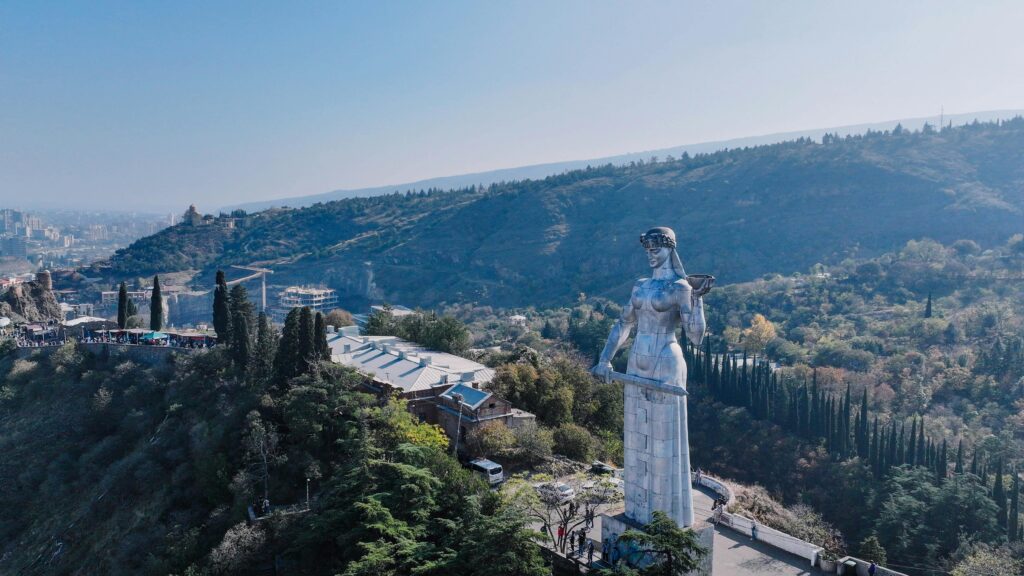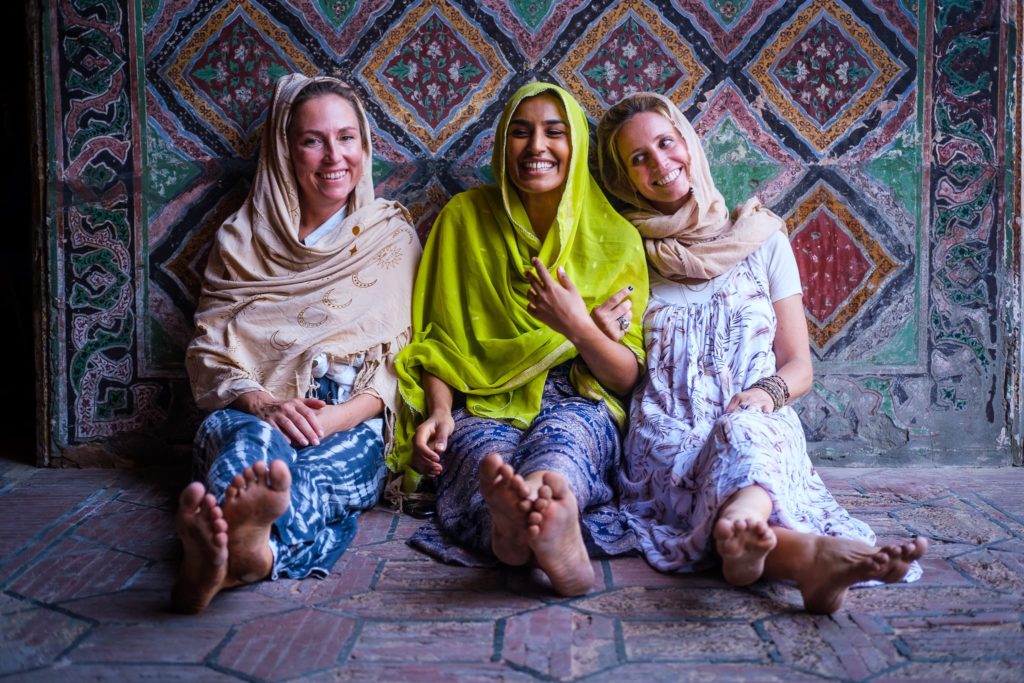One of the world’s oldest cultures resides in the Southern Caucasus mountains on the borders of Europe and Asia. Georgia has existed for some 3000 years in various forms, and over that time has been witness to some of the most cataclysmic events in human history. As a result of that, this country has forged deep culture and folklore that have become richer as the centuries have passed.
There are countless stories, poems, legends, and tales of epic historical events and figures coloring Georgia’s history books and adorning the nation’s cultural fabric. Rustaveli, Shushaniki, the legendary Queen Tamar, and more are all an intrinsic part of Georgian society even up until modern times. To Georgians, these stories are timeless, immortal, and a huge part of what makes this country so special.
In this Epic journal post, we’re going to share some of these stories and give readers a quick glimpse of Georgia’s history and culture. In doing so, you’ll understand more about the country and will hopefully appreciate this amazing place more when you visit.
A Brief History of Georgia
Historically, Georgia has been sandwiched between or occupied by powerful empires: the Persians, Ottomans, Turks, Russians, and Mongols, to name a few. Because of its nature as a crossroads of empire, Georgia has seen a lot over the centuries, to say the least.
Colchis, located in the western part of modern-day Georgia, is one the earliest recorded civilizations from the region and is famously associated with the myth of Jason and the Argonauts, who sought the Golden Fleece. To the east, Iberia (not to be confused with the peninsula) played a significant role in the region’s early history, particularly as a cultural and political entity during the classical period.
By the 4th century AD, Georgia had adopted Christianity as its state religion, making it one of the earliest nations to do so. This move, attributed to St. Nino, helped solidify Georgia’s cultural and national identity, setting it apart from its neighboring empires. The conversion to Christianity also fostered the development of a unique Georgian script and a rich tradition of religious and secular literature.
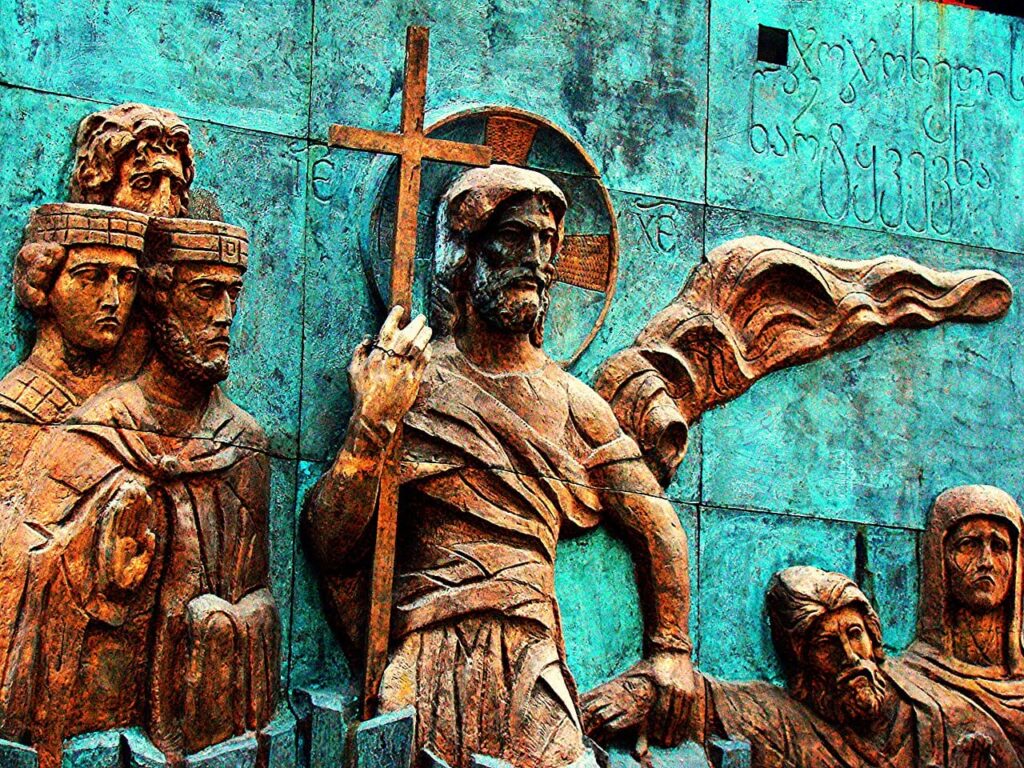
The medieval period marked the zenith of Georgian power and culture, particularly during the reigns of King David IV, known as David the Builder (1089–1125), and Queen Tamar (1184–1213). Under their rule, Georgia experienced a golden age, characterized by military victories, territorial expansion, and cultural achievements. The kingdom expanded its influence across the Caucasus, and Georgian art, architecture, and literature flourished.
This golden era was eventually disrupted by invasions from the Mongols in the 13th century, followed by successive waves of devastation by Timurids and later, the Ottoman Empire and Safavid Persia. By the early 19th century, Georgia fell under Russian control, and after a brief period of independence following the Russian Revolution, it was incorporated into the Soviet Union in 1921.
Despite these challenges, Georgia managed to preserve its cultural identity through periods of fragmentation and foreign domination, maintaining a distinct historical legacy well into the early modern era. It’s had a shaky few centuries but is always ready to welcome new visitors.
Background on Georgian Cultural Heritage
For much of its history, Georgia has been a deeply Orthodox Christian country and remains so to this day. A significant majority of the population is very religious, and the calendar revolves heavily around traditional holidays. Easter is the most important holiday on the Gregorian calendar, and has held that title for a long time.
That heavily religious background has played an indispensable role in shaping Georgian society as well as its history and folklore. Orthodox faith is absolutely central to the country’s identity and as a result, many of these stories and figures derive from Georgia’s Christian heritage.
Below are a few of the most significant folk tales and legends from Georgia that have helped to shape its national identity:
The Tale of Queen Shushanik
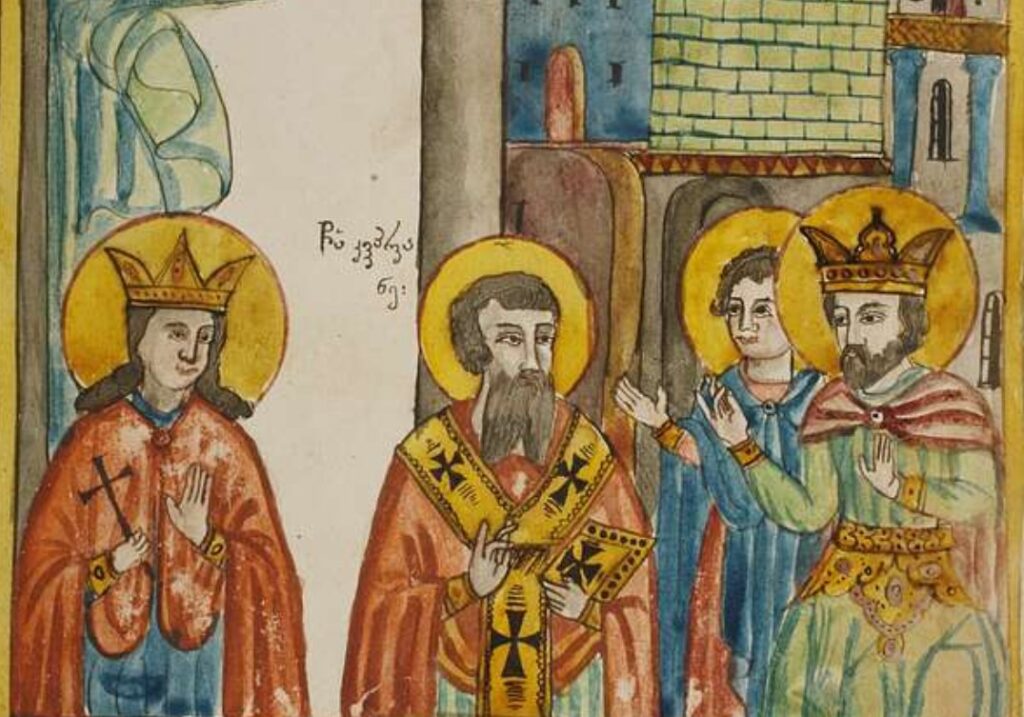
One of this country’s most well-known stories, the tale of Queen Shushanik is a vital part of the cultural heritage of Georgia. This ancient account is still taught in schools today: Queen Shushanik is an Orthodox icon and a celebrated saint within Georgian culture.
That fame and adoration comes from the Queen’s steadfast commitment to her faith. When Christianity was still a fairly new religion in the late 5th century, Shushanik was married to a Georgian prince who had converted to Zoroastrianism – a religion originating in ancient Iran – in order to build a positive relationship between Georgia and the Persian Empire.
Queen Shushanik refused to convert when repeatedly pressed to do so and remained fast in her commitment to her faith. As a result, she was imprisoned for several years and later died in captivity. Some versions of the story even tell tales of her performing miracles for admiring visitors during her imprisonment, such as healing the sick.
She remains an icon to this day due to her uncompromising dedication, with Georgians seeing her vindicated by history in her refusal to convert in order to fit the politics of the time.
The Legendary Queen Tamar

No piece on Georgian history would be complete without talking about this legendary woman. Quite possibly the most important figure in Georgian history, Queen Tamar spearheaded a golden age for Georgia and to this day retains a status that has turned her into a near-mythic hero. Technically a king and not a queen, Tamar overcame incredible odds to become one of Georgia’s most iconic figures.
Like most countries both then and now, Georgia was heavily male-dominated and the idea of a woman in leadership was unthinkable to most people. Because of that, she faced heavy resistance to her rule, both from within Georgian society itself and from external forces. The rich and powerful in Georgia didn’t believe a woman could rule. Her husband, backed by powerful forces amongst the Georgian elite, tried and failed to overthrow her.
Later, a sultan invaded Georgia with the intent of deposing her, as he believed that women were weaker than men and incapable of ruling effectively. The Sultan demanded that she surrender or face defeat and become a concubine in his harem. She refused, and defeated his forces. Another foreign ruler later invaded Georgia as well, using the exact same reasoning and was met with the exact same result: defeat by Tamar’s forces.
Through all of this, Tamar expanded Georgia’s territory to the largest the country has ever enjoyed, eliminated cruel laws, led Georgian society to economic prosperity, and played a central role in forging Georgian identity. Her story ends at this fortress near Tbilisi, where she allegedly lived out her last days and passed away after living a truly historic life.
The Knight in the Panther’s Skin

Written by the renowned poet Shota Rustaveli – a man who also remains famous in Georgia to this day – The Knight in the Panther’s Skin is one of the most celebrated poems in Georgian history.
The poem was written during Tamar’s reign, and even today is an indispensable part of Georgian history. It’s a challenge for modern Georgians to understand as its language is often compared to Shakespearean English. In spite of that, it remains one of the most iconic stories from Georgia akin to Greece’s The Iliad.
This story tells a tale of love and adventure, and takes place in lands as far away from Georgia as China. It is one of the defining poems of the country’s history, myth, and culture.
Taking place across a span of years, a knight known as Avtandil has the ultimate goal of finding Nestan, the daughter of an Indian king. Along the way, the knight seeks out Tariel – the main character of the story who has fallen in love with Nestan. The princess had earlier been sent away to save her from a terrible marriage, and so had vanished. The two men become close friends and seek out Nestan together.
After a long journey spanning much of Asia and many years, Tariel finds and eventually marries Nestan. Avtandil finally finds love of his own as well, marrying the daughter of another king from Arabia. Everyone lives happily ever after in this mythic story.
This is a truly epic fairy tale that reflects the era in which it was written: Georgia’s Golden Age under Tamar. Just as Tamar’s reign saw danger and instability, it also gave way to a period of progress that is still spoken of in mythical terms today by Georgians. The same is true of The Knight in the Panther’s Skin, where the struggles of brave people paved the path for a happy, gratifying future.
Georgian Festivals
Any talk about Georgian folklore and culture has to include at least a little bit about the one-of-a-kind festivals that Georgia has to offer. This country has no shortage of festivals that are steeped in vibrant, rich history: there’s an almost year-round selection to attend that celebrates different aspects of this incredible nation’s culture.
High in Georgia’s remote mountains, the folk festival of Shatiloba is celebrated. There’s a lot going here, with dances, sports, local beer, fire shows, and a ton more. Shatiloba takes place in late summer, which is still a lovely time to visit Georgia. While this festival is harder to reach than many others due to its remote venue, it is one of Georgia’s most unique celebrations and a must-see for intrepid travelers.
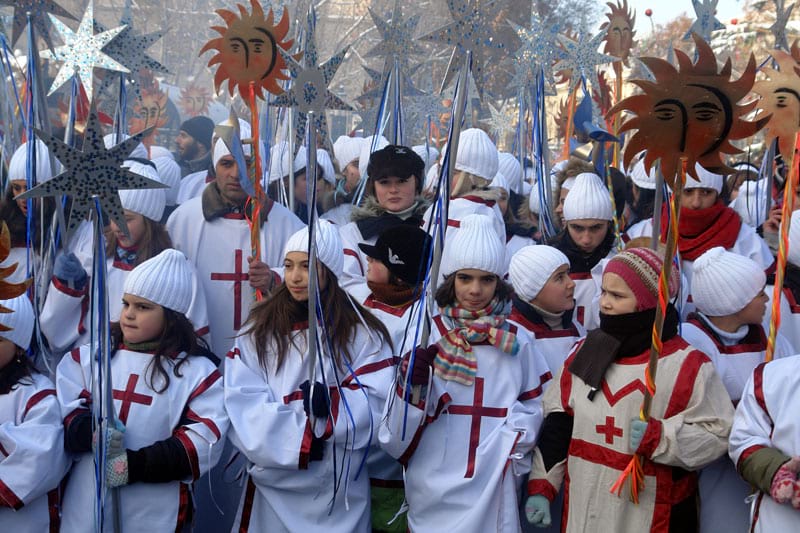
Tbilisoba is a more modern offering, having first been celebrated in 1979. This festival commemorates Tbilisi’s long history, diversity, and Georgian cuisine. Occurring in Autumn, Tbilisoba is a great way to experience Georgian heritage and culture during the cooler months.
The New Wine Festival is another Tbilisi-based commemoration that centers on – you guessed it – wine! Wine is one of the world’s most celebrated creations and it has its origins right here in Georgia. Being in the ancient birthplace of wine has its perks, and this festival is the perfect time to explore the many blends that Georgia has to offer on the cheap. It takes place in May and showcases wineries from all over the country.
Wine is an inseparable piece of Georgian heritage and culture, and that fact is reflected in the pride with which they make their wine. Whether you can make it to this festival or not, exploring Georgia’s wine scene is certainly one of the most fun things to do that involve Georgian culture and history.
Cultural Sites in Georgia
Being so ancient, Georgia certainly has no shortage of interesting places to visit that tell the story of the country. Sites like these are part of Georgian culture in one way or another,
- Mtskheta is a small town only a short drive from Tbilisi and is renowned in Georgian history for being the traditional capital of the country from centuries ago. Full of stunning traditional architecture and fairly small in size, Mtskheta is easily doable in a day or less.
- The City of Gori is infamous for being the birthplace of one of history’s most vile tyrants: Josef Stalin. Gori houses a small museum that showcases the place where Stalin was allegedly raised and, as you can imagine, he is not remembered too fondly in Georgia.
- Kakheti is the beating heart of Georgia’s wine scene. Wineries stretch across the hills as far as the eye can see and showcase Georgian expertise in creating wines of various blends. It’s easy to get a liter of wine for around $5-6 USD and the owner of your guesthouse will likely give you plenty of samples for free!
- Svaneti is home to the famed towers of Svan, which are quite possibly the most distinct architectural features Georgia has ever created. The towers blend with the surrounding mountains to create a landscape that can’t be seen anywhere else, and stand as monuments to the unbreakable Georgian refusal to bow to invaders.
- Located a short, hikeable distance from the capital, Azeula Fortress is an ancient castle that safeguarded one of the most crucial trade routes in Georgia. It’s most famous for being the site where the legendary Queen Tamar chose to live out her last days. At present, the castle is in a state of ruin, but is still a must-see for the history-obsessed.
Wrap Up: Georgian Folklore, History, and Legends
There’s a lot of to be fascinated by in this small country in the southern Caucasus mountains. Georgia’srich history and folklore should capture the attention of almost every visitor. Its cultural heritage is awash with epic stories, people, and events that have shaped the country over thousands of years.
Georgia is one of the world’s most ancient nations and has taken on multiple empires throughout the centuries. Over that time, it has forged a unique culture that is seen in its cuisine, festivals, and stories that are celebrated to this day.
All of this makes Georgia a truly epic destination. This country has such a low profile on the world stage, but it has a rich, one-of-a-kind culture that simply can’t be missed out on.

